 W
WPoetry is a form of literature that uses aesthetic and often rhythmic qualities of language − such as phonaesthetics, sound symbolism, and metre − to evoke meanings in addition to, or in place of, a prosaic ostensible meaning.
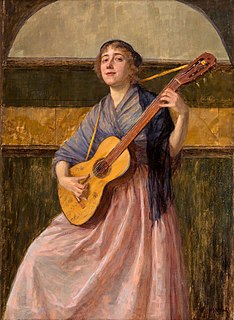 W
WA ballad is a form of verse, often a narrative set to music. Ballads derive from the medieval French chanson balladée or ballade, which were originally "dance songs". Ballads were particularly characteristic of the popular poetry and song of Britain and Ireland from the Late Middle Ages until the 19th century. They were widely used across Europe, and later in Australia, North Africa, North America and South America. Ballads are often 13 lines with an ABABBCBC form, consisting of couplets of rhymed verse, each of 14 syllables. Another common form is ABAB or ABCB repeated, in alternating eight and six syllable lines.
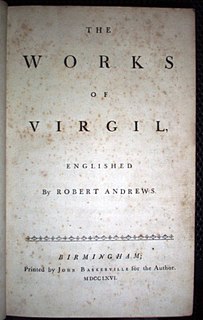 W
WBlank verse is poetry written with regular metrical but unrhymed lines, almost always in iambic pentameter. It has been described as "probably the most common and influential form that English poetry has taken since the 16th century", and Paul Fussell has estimated that "about three quarters of all English poetry is in blank verse".
 W
WThe bosinada or bosinata was a traditional, popular poetic genre in Lombard language that began in the 18th century or earlier and reached its apex in the late 19th century. Bosinate were usually written or printed on sheets of paper and recited by a sort of cantastorie or minstrel called a bosin ; they were usually satirical in content, sometimes explicitly designed to hold someone up to ridicule, or to debunk certain social habits or circumstances; in any case, they were the expression of the naive but sound good sense of the common people.
 W
WThe canto is a principal form of division in medieval and modern long poetry.
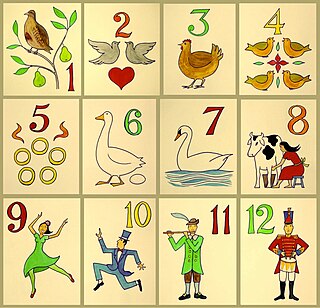 W
WA cumulative song is a song with a simple verse structure modified by progressive addition so that each verse is longer than the verse before. Cumulative songs are popular for group singing, in part because they require relatively little memorization of lyrics, and because remembering the previous verse to concatenate it to form the current verse can become a kind of game.
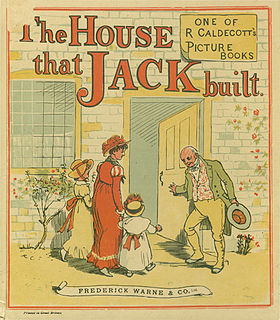 W
WIn a cumulative tale, sometimes also called a chain tale, action or dialogue repeats and builds up in some way as the tale progresses. With only the sparest of plots, these tales often depend upon repetition and rhythm for their effect, and can require a skilled storyteller to negotiate their tongue-twisting repetitions in performance. The climax is sometimes abrupt and sobering as in "The Gingerbread Man." The device often takes the form of a cumulative song or nursery rhyme. Many cumulative tales feature a series of animals or forces of nature each more powerful than the last.
 W
WThe Kural is one of the most important forms of classical Tamil language poetry. It is a very short poetic form being an independent couplet complete in 2 lines, the first line consisting of 4 words and the second line consisting of 3. As one of the five types of Venpa stanza, it must also conform to the grammar for Venpa, the most difficult and the most highly esteemed of stanzaic structures in classical Tamil literature. The Tirukkuṛaḷ by Tiruvalluvar, one of the greatest philosophical works in Tamil, is a typical example.
 W
WMaqāmah are an (originally) Arabic prosimetric literary genre which alternates the Arabic rhymed prose known as Saj‘ with intervals of poetry in which rhetorical extravagance is conspicuous.
 W
WMuwashshah is the name for both an Arabic poetic form and a secular musical genre. The poetic form consists of a multi-lined strophic verse poem written in classical Arabic, usually consisting of five stanzas, alternating with a refrain with a running rhyme. It was customary to open with one or two lines which matched the second part of the poem in rhyme and meter; in North Africa poets ignore the strict rules of Arabic meter while the poets in the East follow them. The musical genre of the same name uses muwaššaḥ texts as lyrics, still in classical Arabic. This tradition can take two forms: the waṣla of Aleppo and the Andalusi nubah of the western part of the Arab world.
 W
WA palinode or palinody is an ode in which the writer retracts a view or sentiment expressed in an earlier poem. The first recorded use of a palinode is in a poem by Stesichorus in the 7th century BC, in which he retracts his earlier statement that the Trojan War was all the fault of Helen.
 W
WPoetic Meter and Poetic Form is a book by Paul Fussell, published by McGraw Hill in 1965, and later as a revised edition in 1979 (ISBN 0-07-553606-4).
 W
WThe qaṣīda is an ancient Arabic word and form of writing poetry, often translated as ode, passed to other cultures after the Arab Muslim expansion. The word qasidah is still used in its original birthplace, Arabia, and in all Arab countries.
 W
WThe Shahr Ashob (Persian: شهر آشوب; literary written as Shahr-e-Ashob, sometimes spelled Shahar-i-Ashob, is an ancient Urdu poetic genre in South Asia with its roots in lamented classical Urdu poetry. It was existed and widely used by the poets between the 16th and 19th centuries during the Mughal Empire. Ashob remained an historical genre in Persian, Urdu and Turkish literature used by the writers, predominantly by the Mughal poets to express their anguish and sorrows over political and social shifts.
 W
WSijo is a Korean traditional poetic form that emerged in the Goryeo period, flourished during the Joseon Dynasty, and is still written today. Bucolic, metaphysical and cosmological themes are often explored. The three lines average 14–16 syllables, for a total of 42–48: theme ; elaboration (3,4,4,4); counter-theme (3,5) and completion (4,3).
 W
WA skolion, also scolion, was a song sung by invited guests at banquets in ancient Greece. Often extolling the virtues of the gods or heroic men, skolia were improvised to suit the occasion and accompanied by a lyre, which was handed about from singer to singer as the time for each scolion came around. "Capping" verses were exchanged, "by varying, punning, riddling, or cleverly modifying" the previous contribution.
 W
WA sonnet is a poetic form which originated in the Italian poetry composed at the Court of the Holy Roman Emperor Frederick II in Palermo, Sicily. The 13th-century poet and notary Giacomo da Lentini is credited with the sonnet's invention for expressing courtly love. The Sicilian School of poets who surrounded him at the Emperor's Court are credited with its spread. The earliest sonnets, however, no longer survive in the original Sicilian language, but only after being translated into Tuscan dialect.
 W
WThe tetractys, or tetrad, or the tetractys of the decad is a triangular figure consisting of ten points arranged in four rows: one, two, three, and four points in each row, which is the geometrical representation of the fourth triangular number. As a mystical symbol, it was very important to the secret worship of Pythagoreanism. There were four seasons, and the number was also associated with planetary motions and music.
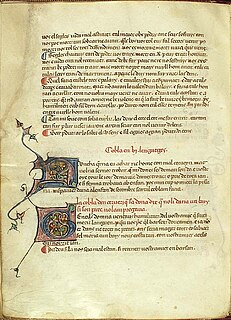 W
WIn Old Occitan literature, a tornada refers to a final, shorter stanza that appears in lyric poetry and serves a variety of purposes within several poetic forms. The word tornada derives from the Old Occitan in which it is the feminine form of tornat, a past participle of the verb tornar. It is derived from the Latin verb tornare.
 W
WA villanelle, also known as villanesque, is a nineteen-line poetic form consisting of five tercets followed by a quatrain. There are two refrains and two repeating rhymes, with the first and third line of the first tercet repeated alternately at the end of each subsequent stanza until the last stanza, which includes both repeated lines. The villanelle is an example of a fixed verse form. The word derives from Latin, then Italian, and is related to the initial subject of the form being the pastoral.
 W
WZajal is a traditional form of oral strophic poetry declaimed in a colloquial dialect. While there is little evidence of the exact origins of the zajal, the earliest recorded zajal poet was the poet Ibn Quzman of al-Andalus who lived from 1078 to 1160. It is generally conceded that the early ancestors of Levantine dialectical poetry were the Andalusian zajal and muwashshaḥah, brought to Egypt and the eastern Mediterranean by Moors fleeing Spain in the thirteenth and fourteenth centuries. An early master of Egyptian zajal was the fourteenth century zajjāl Abu ʿAbd Allāh al-Ghubārī. Zajal's origins may be ancient but it can be traced back to at least the 12th century. Today it is most alive in the Levant as well as the Maghreb, particularly Morocco and Algeria. Zajal is semi-improvised and semi-sung and is often performed in the format of a debate between zajjalin. It is usually accompanied by percussive musical instruments and a chorus of men who sing parts of the verse.